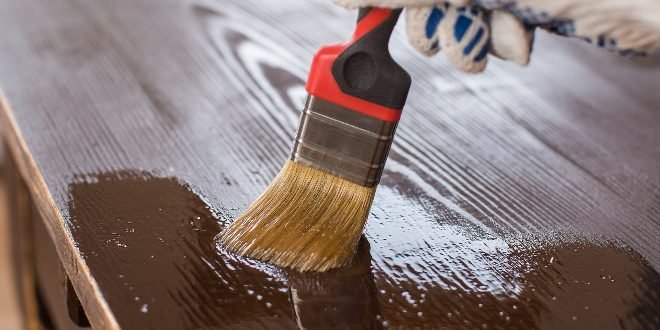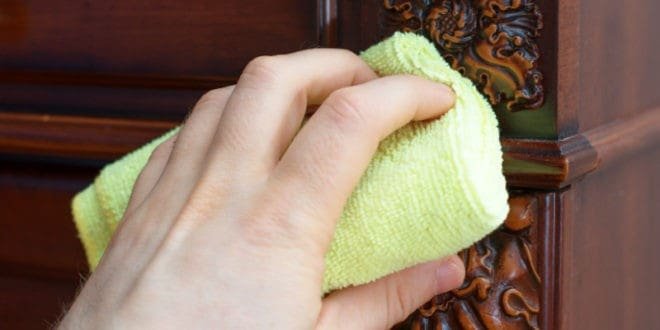Treating teak wood
” Tips for proper wood care “
If you have high-quality pieces of furniture in your garden or even in your apartment, you may have chosen for Teak furniture yet decided. These not only look incredibly beautiful, but also have very special properties. Teak wood is robust, easy-care and above all weatherproof wood. In this article you will learn everything you should know about teak as well as important tips for wood care and finishing: how to treat teak wood.
Teak woods – characteristics and interesting facts
The teak tree is at home in the subtropics of South and Southeast Asia. Its beautiful wood has a honey-brown to reddish tint. It feels slightly oily, as it contains, among other things, natural oils, as well as rubber. This gives teak a very practical natural protection against pests and fungi. In addition, teak wood hardly swells when it comes into contact with moisture. It therefore warps only minimally, which makes teak furniture particularly durable and stable. Teak is comparably hard as oak and at the same time light enough to make furniture from it that can be easily transported, such as furniture for the garden.

As tropical wood, it is one of the raw materials that are controversial, since unfortunately there is still a lot of illegal overexploitation being carried out today. Therefore, it is of the utmost importance to pay attention to a corresponding environmental seal such as the FSC label or the “Indonesian LEGAL Wood” label when buying teak furniture.

Teak wood care: The best tips for long-lasting beauty of your teak furniture
The subtropical wood species is actually very undemanding in terms of care. Regular cleaning with water and neutral soap is quite enough to take care of teak wood and keep it functional and beautiful. Coarser dirt should first be removed with a hand brush. Afterwards, a soft sponge or cloth and plenty of water are ideal for cleaning. If you prefer to clean your teak furniture with a high-pressure cleaner, you should definitely pay attention to the pressure, as too much pressure can damage the wood. A maximum pressure of 70 bar and a distance of at least 30 cm between the furniture and the nozzle are considered ideal for gentle cleaning even at high pressure.
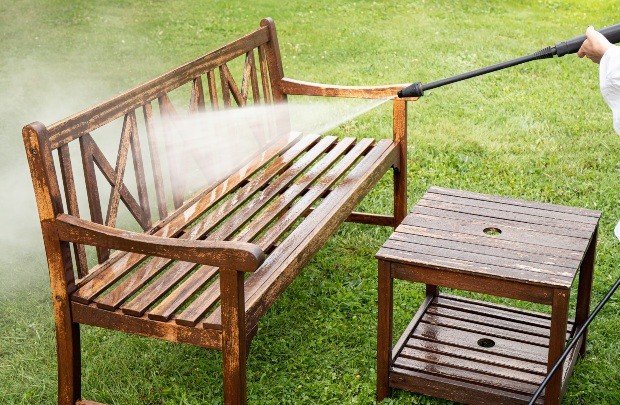
Teak furniture that stands outside all year round develops a silver-gray patina. If you want to prevent this color change, you should treat your furniture regularly – at least every one to two years – with special care oil. If the teak furniture is already grey, the patina should be sanded off before oiling. Fine sandpaper does a good job here. There are also special degreasers that may save you from sanding down and that are used before oiling the wood.
Teak furniture that is regularly cleaned and oiled can easily spend the winter outside. However, a covered location is recommended to provide some protection. On the other hand, plastic covers are not suitable, as they can promote mold, among other things. It is also not recommended to store it in a dry boiler room. Otherwise, the furniture is threatened with unsightly dry cracks.
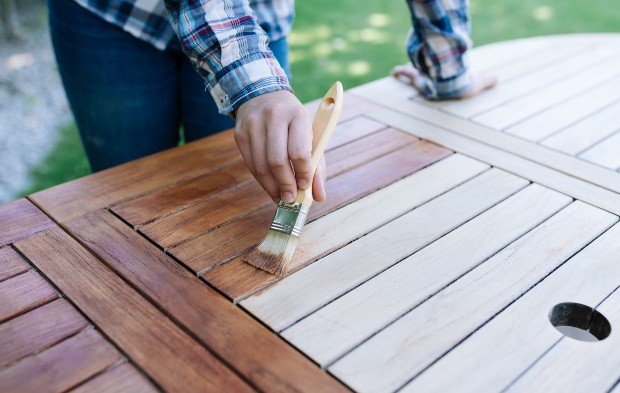
Treating teak wood: protecting the shade with wood oil
To treat teak wood, regular furniture oil is just as suitable as special teak oil. It is important that the oil is applied to a clean surface. In addition, not too much oil should be used. It is advisable to wipe off excess oil with a rag 20 minutes after oiling. If you do not do this, the oil will run down and accumulate on the floor, which can lead to discoloration of the floor covering. If you want to protect the floor in general, for example also from splashes during oiling, it is recommended to lay out a tarpaulin beforehand.

Treating already grayed teak wood: this must be taken into account
Not everyone likes the gray patina that forms over time in untreated teak wood. If the furniture is already grayed out, often only sanding helps. This is a little tedious, but highly effective. Sandpaper with a grain size of 100 to 240 is ideal for this. The patina must be completely removed and should always be sanded in the direction of the grain. After sanding, the surface is thoroughly wiped with a damp cloth in order to be able to remove dust and sanding residues. Only the degreaser is applied with a brush or a sponge. The care product must act for half an hour. The wood is then thoroughly scrubbed off with a soft brush and plenty of clear water. The final step in teak wood treatment is then the oiling and subsequent removal of the excess oil.

The following must be taken into account when treating teak wood: the wood care must take effect for a while and move in until you can use the garden furniture again. You should plan about a week for this. Then you can use the furniture again without having to worry about discoloration on your clothes.
Treating teak wood: oiling wood or prefer waxing?
An alternative to oiling is the treatment with furniture wax. This form of wood care does not penetrate so deeply into the raw material, but it provides a special shine and has a stronger water-repellent effect than oil. Furniture care wax consists of liquefied wax, as well as solvents that produce a typical odor that takes some time to evaporate completely.
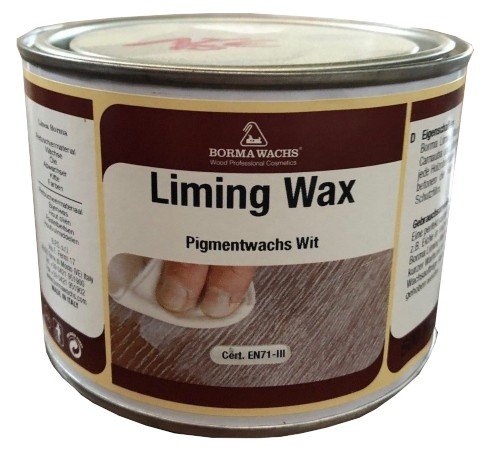
The wax creates a beautiful shine that brings out the grain in a great way. However, since wax can liquefy at higher temperatures and sticky spots can form, wax is less suitable for outdoor furniture. However, teak furniture in the living area can be given a very noble, shiny look with wax. A natural wax that is suitable for wood care is, among other things, beeswax.
